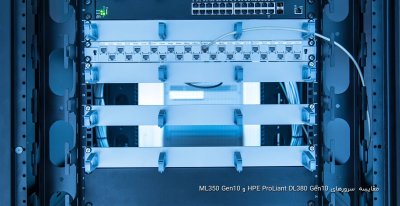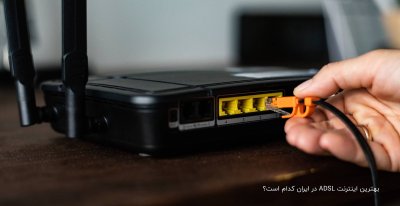با سلام دوستان فکر کنم کار خوبی باشه که هر چیزی در مورد web3 می دونه ایجا بنویسه تا به لطف خدا بتونیم از web2 به web3 روی بیاریم
بخش اول : web3چیست؟
وب ۳٫۰ مرحله و نسخه جدید از آینده وب جهانگستر است. از عبارت وب ۳٫۰ برای توضیح و معرفی نسل سوم وب استفاده میشود. وب ۳٫۰ همانند وب ۲٫۰ در پی آن است تا در اینترنت نوآوری ایجاد نماید. بسیاری بر این باورند که فناوریهای پدیدآمده جدید مانند وب معنایی در دستور کار وب ۳٫۰ قرار خواهد گرفت. نظریههای دیگر براین باورند که نرم افزارهای تحت وب ۳٫۰ موجب استفاده از اینترنت پرسرعت در میان مردم خواهد شد.
در ماه میسال ۲۰۰۶، Tim Berners-Lee مخترع وب توضیح داد:
مردم مدام از من میپرسند وب ۳٫۰ چیست؟ من فکر میکنم شاید اگر ما یک پوشش تصویری از گرافیک برداری مقیاسپذیر داشته باشیم و همانند وب ۲٫۰ مفاهیم را روی آن پیاده کنیم، درک پدیده وب ۳٫۰ آسان خواهد بود.
در سال ۲۰۰۷، اریک اشمیت درباره وب ۳٫۰ توضیح داد:
وب ۲٫۰ برای خالقان آن یک راه بازاریابی است، اما برای درک مفهوم وب ۳٫۰ باید ابتدا خودآن پدید آید. اما اگر بخواهم حدس بزنم که وب ۳٫۰ چیست، میگویم راه جدیدی برای ساختن برنامههای تحت وب است. پیش بینی من این است که وب ۳٫۰ راههای جدیدی برای تولید برنامه پیش رو خواهد داشت. تعداد زیادی از مشخصات هستند: برنامهها نسبتا کوچک و کم حجم خواهد شد، دادهها با صورت تودهای خواهند بود، نرم افزارها قابلیت اجرا روی هر سیستمی را خواهند داشت، برنامهها بسیار سریع و قابل انعطاف خواهند بود.
منبع:
http://en.wikipedia.org/w/index.php?title=Web_3.0&oldid=216244314
ادامه به زبان اصلی
Following the introduction of the phrase "Web 2.0" as a description of the recent evolution of the Web, the term "Web 3.0" has been introduced to hypothesize about a future wave of Internet innovation. Views on the next stage of the World Wide Web's evolution vary greatly, from the concept of emerging technologies such as the Semantic Web transforming the way the Web is used (and leading to new possibilities in artificial intelligence) to the observation that increases in Internet connection speeds, modular web applications, and advances in computer graphics will play the key role in the evolution of the World Wide Web. [1]
Proposed expanded definition
Web 3.0, a phrase coined by John Markoff of the New York Times in 2006, refers to a supposed third generation of Internet-based services that collectively comprise what might be called 'the intelligent Web'—such as those using semantic web, microformats, natural language search, data-mining, machine learning, recommendation agents, and artificial intelligence technologies—which emphasize machine-facilitated understanding of information in order to provide a more productive and intuitive user experience.
Nova Spivack defines Web 3.0 as the third decade of the Web (2010–2020) during which he suggests several major complementary technology trends will reach new levels of maturity simultaneously including:
• transformation of the Web from a network of separately siloed applications and content repositories to a more seamless and interoperable whole.
• ubiquitous connectivity, broadband adoption, mobile Internet access and mobile devices;
• network computing, software-as-a-service business models, Web services interoperability, distributed computing, grid computing and cloud computing;
• open technologies, open APIs and protocols, open data formats, open-source software platforms and open data (e.g. Creative Commons, Open Data License);
• open identity, OpenID, open reputation, roaming portable identity and personal data;
• the intelligent web, Semantic Web technologies such as RDF, OWL, SWRL, SPARQL, GRDDL, semantic application platforms, and statement-based datastores;
• distributed databases, the "World Wide Database" (enabled by Semantic Web technologies); and
• intelligent applications, natural language processing.[2], machine learning, machine reasoning, autonomous agents.[3]
esearch under Spivack's definition
Transformation
Web 3.0 has been described as the "executable web". In the analogy to file system permissions, Web 1.0 was "read-only", Web 2.0 is "read-write", and Web 3.0 will be "read-write-execute". [4] With the still exponential growth of computer power, it is not inconceivable that the next generation of sites will be equipped with the resources to run user-contributed code on them.[citation needed] The "executable web" can morph online applications into Omni Functional Platforms that deliver a single interface rather than multiple nodes of functionality.[5][6]
Network computing
Related to the artificial intelligence direction, Web 3.0 could be the realization and extension of the Semantic web concept. Academic research is being conducted to develop software for reasoning, based on description logic and intelligent agents, for example, the World Wide Mind project.[7] Such applications can perform logical reasoning operations using sets of rules that express logical relationships between concepts and data on the Web.[5] Sramana Mitra differs on the viewpoint that Semantic Web would be the essence of the next generation of the Internet and proposes a formula to encapsulate Web 3.0.[8] Web 3.0 has also been linked to a possible convergence of Service-oriented architecture and the Semantic web.[9] Web 3.0 is also called the "Internet of Services", i.e. besides the human readable part of the web there will be machine accessible SOA services which can be combined/orchestrated to higher level of services.[10]
Distributed databases
The first step towards a "Web 3.0" is the emergence of "The Data Web" as structured data records are published to the Web in reusable and remotely queryable formats, such as XML, RDF, Website Parse Template and microformats. This is also known as the bottom-up approach.[11] The recent growth of SPARQL technology provides a standardized query language and API for searching across distributed RDF databases on the Web. The Data Web enables a new level of data integration and application interoperability, making data as openly accessible and linkable as Web pages. The Data Web is the first step on the path towards the full Semantic Web. In the Data Web phase, the focus is principally on making structured data available using RDF. The full Semantic Web stage will widen the scope such that both structured data and even what is traditionally thought of as unstructured or semi-structured content (such as Web pages, documents, etc.) will be widely available in RDF and OWL semantic formats. [12] Website parse templates will be used by Web 3.0 crawlers to get more precise information about web sites' structured content.
Intelligent applications
Web 3.0 has also been used to describe an evolutionary path for the Web that leads to artificial intelligence that can reason about the Web in a quasi-human fashion. Some skeptics regard this as an unobtainable vision. However, companies such as IBM and Google are implementing new technologies that are yielding surprising information such as making predictions of hit songs from mining information on college music Web sites. There is also debate over whether the driving force behind Web 3.0 will be intelligent systems, or whether intelligence will emerge in a more organic fashion, from systems of intelligent people, such as via collaborative filtering services like del.icio.us, Flickr and Digg that extract meaning and order from the existing Web and how people interact with it.[12]
Other potential research
3D spaces
Another possible path for Web 3.0 is towards the 3 dimensional vision championed by the Web3D Consortium. This would involve the Web transforming into a series of 3D spaces, taking the concept realised by Second Life further.[13] This could open up new ways to connect and collaborate using 3D shared spaces.[14]
Socio-technological research
The inclusion of the concept of a "Web 0.0" as the pre-existing real-world "sensual web" has been proposed. In that context Web 3.0 is the development of a series where integration of technologies for digital networking and processing is digested and non dissociable of the new "real-world". In this definition, Web 3.0 is "the biological, digital analog web where information is made of a plethora of digital values coalesced for sense and linked to the real-world by analog interfaces."[15]
بخش اول : web3چیست؟
وب ۳٫۰ مرحله و نسخه جدید از آینده وب جهانگستر است. از عبارت وب ۳٫۰ برای توضیح و معرفی نسل سوم وب استفاده میشود. وب ۳٫۰ همانند وب ۲٫۰ در پی آن است تا در اینترنت نوآوری ایجاد نماید. بسیاری بر این باورند که فناوریهای پدیدآمده جدید مانند وب معنایی در دستور کار وب ۳٫۰ قرار خواهد گرفت. نظریههای دیگر براین باورند که نرم افزارهای تحت وب ۳٫۰ موجب استفاده از اینترنت پرسرعت در میان مردم خواهد شد.
در ماه میسال ۲۰۰۶، Tim Berners-Lee مخترع وب توضیح داد:
مردم مدام از من میپرسند وب ۳٫۰ چیست؟ من فکر میکنم شاید اگر ما یک پوشش تصویری از گرافیک برداری مقیاسپذیر داشته باشیم و همانند وب ۲٫۰ مفاهیم را روی آن پیاده کنیم، درک پدیده وب ۳٫۰ آسان خواهد بود.
در سال ۲۰۰۷، اریک اشمیت درباره وب ۳٫۰ توضیح داد:
وب ۲٫۰ برای خالقان آن یک راه بازاریابی است، اما برای درک مفهوم وب ۳٫۰ باید ابتدا خودآن پدید آید. اما اگر بخواهم حدس بزنم که وب ۳٫۰ چیست، میگویم راه جدیدی برای ساختن برنامههای تحت وب است. پیش بینی من این است که وب ۳٫۰ راههای جدیدی برای تولید برنامه پیش رو خواهد داشت. تعداد زیادی از مشخصات هستند: برنامهها نسبتا کوچک و کم حجم خواهد شد، دادهها با صورت تودهای خواهند بود، نرم افزارها قابلیت اجرا روی هر سیستمی را خواهند داشت، برنامهها بسیار سریع و قابل انعطاف خواهند بود.
منبع:
http://en.wikipedia.org/w/index.php?title=Web_3.0&oldid=216244314
ادامه به زبان اصلی
Following the introduction of the phrase "Web 2.0" as a description of the recent evolution of the Web, the term "Web 3.0" has been introduced to hypothesize about a future wave of Internet innovation. Views on the next stage of the World Wide Web's evolution vary greatly, from the concept of emerging technologies such as the Semantic Web transforming the way the Web is used (and leading to new possibilities in artificial intelligence) to the observation that increases in Internet connection speeds, modular web applications, and advances in computer graphics will play the key role in the evolution of the World Wide Web. [1]
Proposed expanded definition
Web 3.0, a phrase coined by John Markoff of the New York Times in 2006, refers to a supposed third generation of Internet-based services that collectively comprise what might be called 'the intelligent Web'—such as those using semantic web, microformats, natural language search, data-mining, machine learning, recommendation agents, and artificial intelligence technologies—which emphasize machine-facilitated understanding of information in order to provide a more productive and intuitive user experience.
Nova Spivack defines Web 3.0 as the third decade of the Web (2010–2020) during which he suggests several major complementary technology trends will reach new levels of maturity simultaneously including:
• transformation of the Web from a network of separately siloed applications and content repositories to a more seamless and interoperable whole.
• ubiquitous connectivity, broadband adoption, mobile Internet access and mobile devices;
• network computing, software-as-a-service business models, Web services interoperability, distributed computing, grid computing and cloud computing;
• open technologies, open APIs and protocols, open data formats, open-source software platforms and open data (e.g. Creative Commons, Open Data License);
• open identity, OpenID, open reputation, roaming portable identity and personal data;
• the intelligent web, Semantic Web technologies such as RDF, OWL, SWRL, SPARQL, GRDDL, semantic application platforms, and statement-based datastores;
• distributed databases, the "World Wide Database" (enabled by Semantic Web technologies); and
• intelligent applications, natural language processing.[2], machine learning, machine reasoning, autonomous agents.[3]
esearch under Spivack's definition
Transformation
Web 3.0 has been described as the "executable web". In the analogy to file system permissions, Web 1.0 was "read-only", Web 2.0 is "read-write", and Web 3.0 will be "read-write-execute". [4] With the still exponential growth of computer power, it is not inconceivable that the next generation of sites will be equipped with the resources to run user-contributed code on them.[citation needed] The "executable web" can morph online applications into Omni Functional Platforms that deliver a single interface rather than multiple nodes of functionality.[5][6]
Network computing
Related to the artificial intelligence direction, Web 3.0 could be the realization and extension of the Semantic web concept. Academic research is being conducted to develop software for reasoning, based on description logic and intelligent agents, for example, the World Wide Mind project.[7] Such applications can perform logical reasoning operations using sets of rules that express logical relationships between concepts and data on the Web.[5] Sramana Mitra differs on the viewpoint that Semantic Web would be the essence of the next generation of the Internet and proposes a formula to encapsulate Web 3.0.[8] Web 3.0 has also been linked to a possible convergence of Service-oriented architecture and the Semantic web.[9] Web 3.0 is also called the "Internet of Services", i.e. besides the human readable part of the web there will be machine accessible SOA services which can be combined/orchestrated to higher level of services.[10]
Distributed databases
The first step towards a "Web 3.0" is the emergence of "The Data Web" as structured data records are published to the Web in reusable and remotely queryable formats, such as XML, RDF, Website Parse Template and microformats. This is also known as the bottom-up approach.[11] The recent growth of SPARQL technology provides a standardized query language and API for searching across distributed RDF databases on the Web. The Data Web enables a new level of data integration and application interoperability, making data as openly accessible and linkable as Web pages. The Data Web is the first step on the path towards the full Semantic Web. In the Data Web phase, the focus is principally on making structured data available using RDF. The full Semantic Web stage will widen the scope such that both structured data and even what is traditionally thought of as unstructured or semi-structured content (such as Web pages, documents, etc.) will be widely available in RDF and OWL semantic formats. [12] Website parse templates will be used by Web 3.0 crawlers to get more precise information about web sites' structured content.
Intelligent applications
Web 3.0 has also been used to describe an evolutionary path for the Web that leads to artificial intelligence that can reason about the Web in a quasi-human fashion. Some skeptics regard this as an unobtainable vision. However, companies such as IBM and Google are implementing new technologies that are yielding surprising information such as making predictions of hit songs from mining information on college music Web sites. There is also debate over whether the driving force behind Web 3.0 will be intelligent systems, or whether intelligence will emerge in a more organic fashion, from systems of intelligent people, such as via collaborative filtering services like del.icio.us, Flickr and Digg that extract meaning and order from the existing Web and how people interact with it.[12]
Other potential research
3D spaces
Another possible path for Web 3.0 is towards the 3 dimensional vision championed by the Web3D Consortium. This would involve the Web transforming into a series of 3D spaces, taking the concept realised by Second Life further.[13] This could open up new ways to connect and collaborate using 3D shared spaces.[14]
Socio-technological research
The inclusion of the concept of a "Web 0.0" as the pre-existing real-world "sensual web" has been proposed. In that context Web 3.0 is the development of a series where integration of technologies for digital networking and processing is digested and non dissociable of the new "real-world". In this definition, Web 3.0 is "the biological, digital analog web where information is made of a plethora of digital values coalesced for sense and linked to the real-world by analog interfaces."[15]











